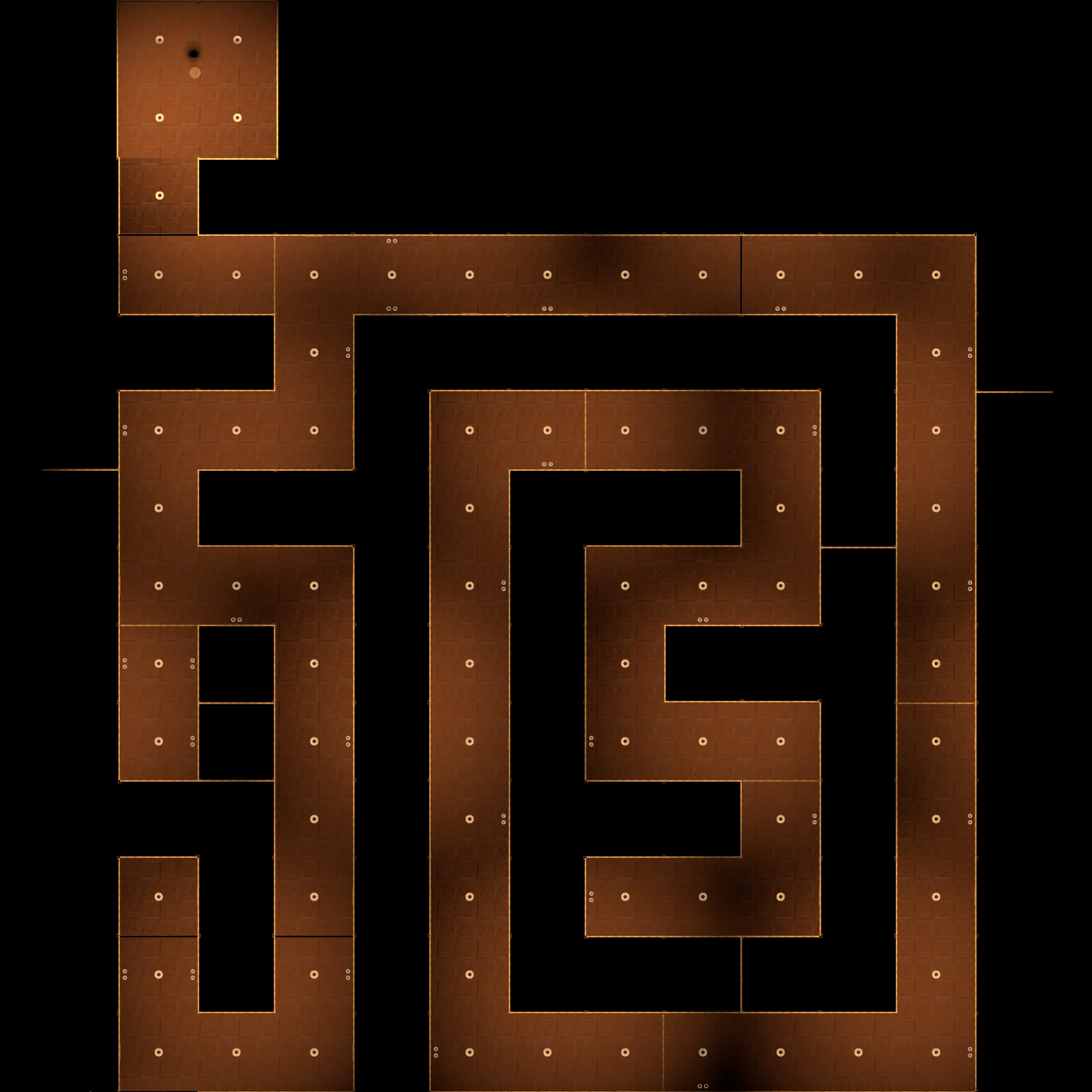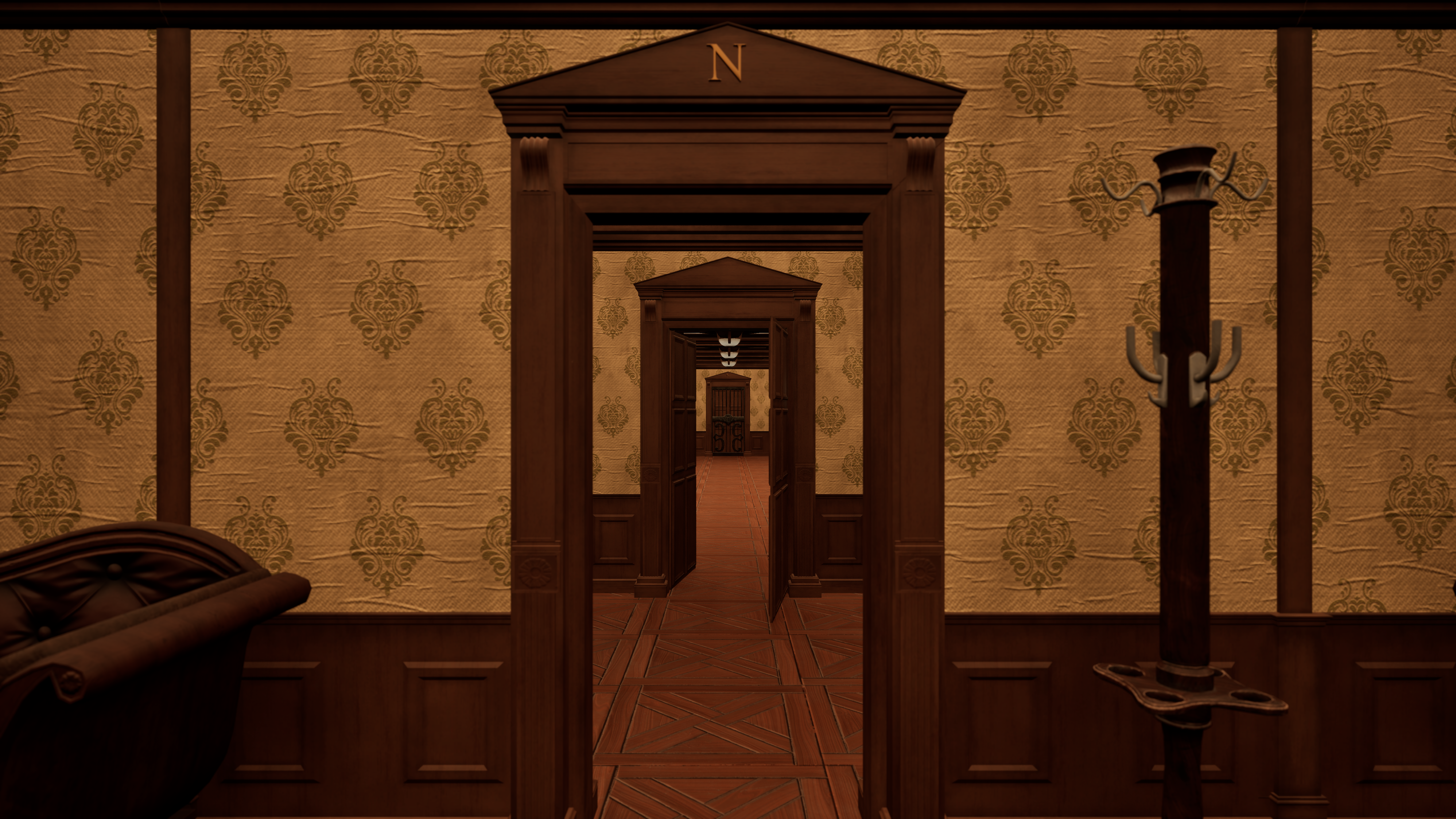

The Hallway is a part of the SCP - 7310 project. The SCP project was the end of year project of my third year as a student.
As said in the game title, this project universe is centered around the concept of SCP. While playing, the player will have to pass through several rooms and complete puzzles in each of them to escape and move on to the next room.
This project was made with 9 people, below are the ones who worked on this part of the game :
Modeling : Kierann Proust
Shading/Texturing : Cindy Chantôme
Development : Me
During this project, my mission was to create the gameplay of the puzzles, I also worked on the UI as well as the save system.
The goal of this enigma is to find the end of a maze while passing though numerous obstacles. For this enigma, each time you create a new game, the maze will randomize itself.

To guide the player on the right path, there are lights on the walls at intersections, the lights leading to the right path will flicker while the wrong ones won’t.
While progressing through the maze, to force the player forward, walls rise up from all sides of the corridor, closing the path behind and in front of the player if he wasn’t fast enough.


The main difficulty of this enigma was to create the procedural side of the maze, there were also problems with the closing walls, below is the solution I found.
To know if the player is blocked, each closing wall needs to know their next closing walls. If the player pass through a closing wall, a timer is triggered on their next closing walls.
If the player pass through the next closing wall before the end of the timer, the timer stop and a new one start for the following closing walls.
Else, if the player didn’t pass through the next closing wall before the end of the timer, the next closing walls rise up. At this point, if the player is blocked, he will have to retry the maze (the maze doesn’t change).


The concept of this puzzle comes from “The Legend of Zelda : Skyward Sword”. In this puzzle, multiple rooms are placed in the world, forming a maze.
Each room would have a different number of doors. If a room had an exit on a side, but no other room behind or a room without a door on this side, the door would be closed, stopping the player from advancing.

The player can move these rooms from a control table and need to dispose them the right way to create a path to this maze exit.
There is a total of two control tables, there are both inside the maze. The player can switch between these two to unlock new possible moves and make progression easier.

The biggest problem of this puzzle was to know whether each door of each room had another door to “connect” with or not.
To get around this issue, each room knows which side its doors are on. After moving a room, an event trigger, checking if each door in the room has a room next to it with a door on the same side, but reversed. For example, a door on the X+ axis would search for a door on the X- axis.
